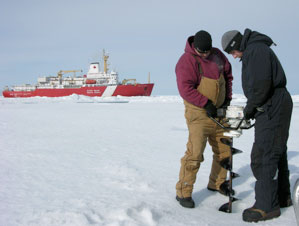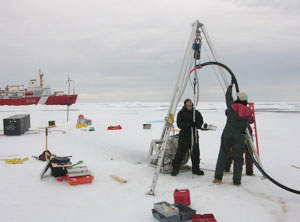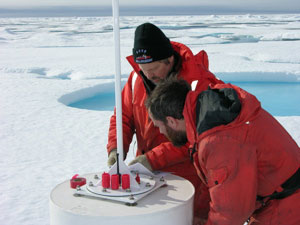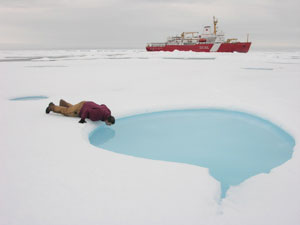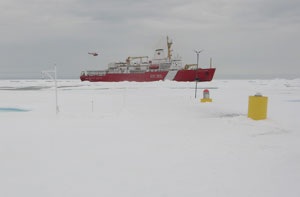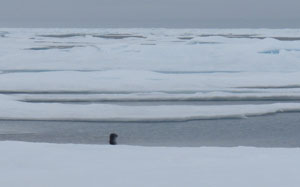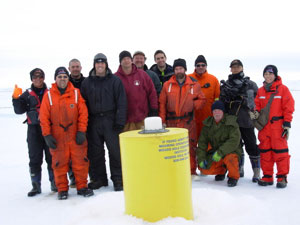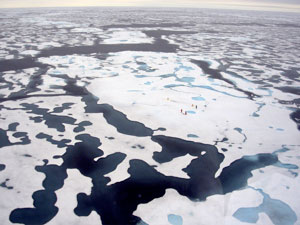Luc RainvilleAugust 12-13, 2007After a while, it's hard to remember what was different between the floe where ITP-4 was deployed (2005) and the one what we chose for ITP-6. Particularly for the sites where more than one buoy is deployed, it's always more useful and fun to name the floe. This morning, I helped Jenny Hutchings and Alice Orlich deploy three ice buoys that will track the mouvement of the ice. We packed the helicopter and went looking for multi-year ice. The goal is always to select nice thick floes that will last for a few seasons. While doing that, we found a big flat piece of multi-year ice that tuned out to be perfect for the deployement of an Ice Based Observatory (IBO), a set of three buoys measuring the water column, the water-ice interface, and the ice thickness. The ship's crew and rest of the WHOI guys finished the deployment of mooring B (again without any glitch), and then a big group of us headed for the ice. While we were installing the buoys, a few people on the bridge (the ship was parked right next to the floe) noticed the long stripes across the floe, and the name Camp Zebra was suggested. The idea behind IBO is to combine three different instruments that have been (and usually still are) deployed separately to get a better understanding of the Physics of the ice and of the upper ocean, and study how the two interact. First there is the ice mass balance buoy, built by the Cold Regions Research and Engineering Laboratory, which measures ice temperature, the ice growth from under the ice, as well as the ice and snow accumulation (or decrease) from above. We also deployed a Ocean Flux Buoy from the Naval Postgraduate School, measuring the heat and momemtum transfers at the interface between the water and the ice. Finally, there is the WHOI Ice-Tethered Profiler (ITP), measuring the water column properties from about 7 meters below the surface to depths of nearly 800 m. Everything went very well. In addition to the buoy work, Jenny led some ice measurement and ice coring operations - to be described in tomorrow's dispatch. Everybody had a successful (and fun) time on the ice!
Last updated: October 7, 2019 | ||||||||||||||||||||||||||||||||||||||
Copyright ©2007 Woods Hole Oceanographic Institution, All Rights Reserved, Privacy Policy. | ||||||||||||||||||||||||||||||||||||||


